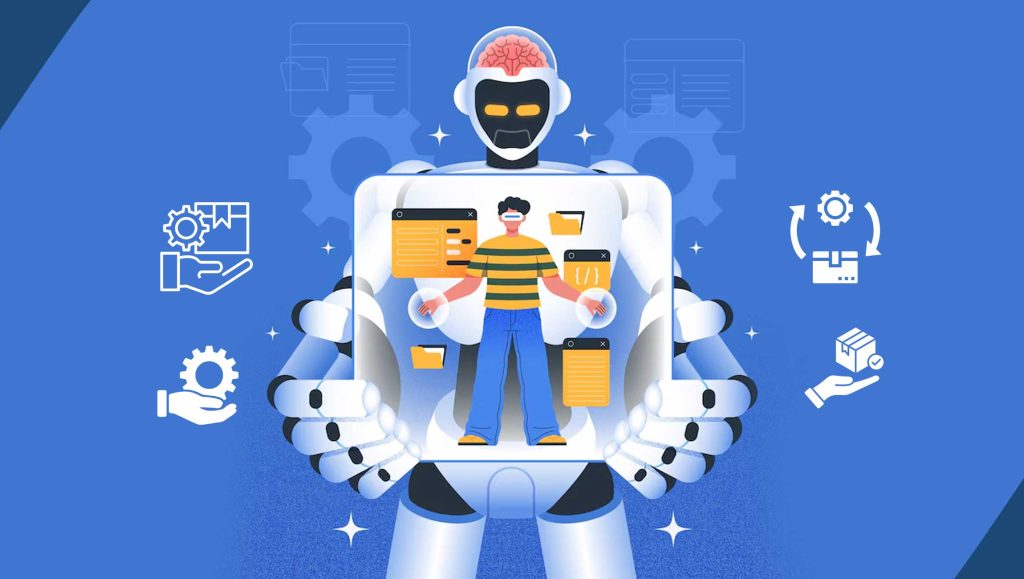Service delivery is undergoing a seismic shift with the emergence and growth of automation. Businesses are increasingly turning to automated solutions to streamline operations, enhance accuracy, and deliver services with unprecedented speed. This shift is not merely about replacing human effort but augmenting it to achieve efficiency and scalability.
Automated service deliveries are redefining customer expectations, providing them with instant, reliable, and round-the-clock service. As this trend accelerates, it promises to reshape the service industry, making the instant gratification of customer demands the new standard.
Innovating Service Delivery: Cutting-Edge Trends in Automation
Automated service deliveries are evolving rapidly, driven by technological advancements and changing consumer expectations. This evolution is marked by several key trends that are shaping the future of how services are delivered across industries.
1. AI-Powered Chatbots:
Today’s chatbots are increasingly intelligent, capable of resolving intricate customer issues and refining their conversational abilities from each interaction, providing a near-human level of communication.
2. Robotic Process Automation (RPA):
RPA is transforming back-office operations, swiftly executing repetitive tasks with precision, thereby accelerating customer service processes and significantly reducing human error.
3. Autonomous Delivery Vehicles:
The advent of drones and self-driving vehicles for delivery is revolutionizing logistics, offering faster, cost-effective, and contactless delivery options, especially in the last-mile delivery segment.
4. Predictive Analytics:
Leveraging big data, services can now anticipate customer needs, offering solutions and support proactively, which enhances customer satisfaction and loyalty through timely engagement.
5. Personalization Engines:
Advanced algorithms are crafting bespoke service experiences by analyzing individual customer data, ensuring that each interaction is tailored to the user’s preferences and previous behavior.
6. Blockchain for Transparency:
Blockchain is being integrated into service delivery to provide immutable records of transactions, enhancing the security and transparency of automated services and fostering greater trust with consumers.
Read More: SalesTechStar Interview with Patrick Finn, VP of Sales at Cloudflare
Transforming Delivery: The Automated Service Revolution
Automated service deliveries are reshaping the traditional paradigms of delivery models and processes. This shift is driven by the integration of advanced technologies that streamline service provision, enhance customer experiences, and redefine industry standards for efficiency and speed.
1. On-Demand Delivery Acceleration:
Automation propels on-demand delivery services to new heights, providing the agility to fulfill customer demands swiftly. This results in a service landscape where immediacy is not just valued but expected and delivered.
2. Dynamic Routing Optimization:
Leveraging algorithms and real-time traffic data, automated systems dynamically optimize delivery routes. This not only trims down transit times but also slashes fuel consumption, driving operational efficiency to its peak.
3. Enhanced Scalability:
Automation equips businesses with the ability to effortlessly scale up or down in response to market demands. This flexibility circumvents the limitations traditionally imposed by manual workforce management, fostering a responsive delivery model.
4. Cost Reduction:
The strategic use of automated services curtails the dependency on manual labor, streamlining delivery processes. This efficiency translates into substantial cost savings and a leaner resource allocation, bolstering the bottom line.
5. Improved Accuracy:
Precision is paramount in automated delivery systems, which meticulously reduce errors in order fulfillment. This precision enhances customer satisfaction by ensuring that service promises are not just met, but consistently exceeded.
6. Sustainability:
Automated deliveries are at the forefront of sustainable practices, optimizing routes for minimal environmental impact. This approach significantly lowers the carbon footprint, paving the way for greener delivery processes and a healthier planet.
Automated Deliveries: Redefining the Future of Logistics
The future of automated service deliveries is set to dramatically transform delivery models and process trends. As we advance, automation will become the backbone of delivery services, offering unparalleled speed and precision. The rise of smart logistics powered by AI will see delivery routes optimized in real-time, drastically reducing delivery times and operational costs.
Scalability will be redefined as businesses deploy automated systems that adapt in real-time to fluctuating demands, ensuring that scalability is no longer a hurdle but a competitive advantage. Cost structures will shift, with savings on labor and increased efficiency driving down prices and expanding profit margins.
Accuracy in deliveries will reach new heights, with automated systems ensuring near-perfect order fulfillment, thus elevating customer trust and satisfaction. Moreover, the push towards sustainability will be bolstered by automated services, as optimized routes and reduced resource usage contribute to a greener planet. In essence, the future beckons a more agile, cost-effective, and environmentally conscious delivery ecosystem, reshaping the way businesses operate and deliver.
Conclusion
The trajectory of automated service deliveries promises a future where efficiency, precision, and sustainability are the cornerstones of delivery models. As businesses embrace this technological tide, they will unlock new levels of operational excellence, customer satisfaction, and environmental stewardship, setting a new standard for the delivery processes of tomorrow. The impact of automation will be a game-changer, heralding an era of innovation that will redefine the landscape of service delivery.
Read More: What is Lead Distribution and how does it Enhance the Sales Process?





















